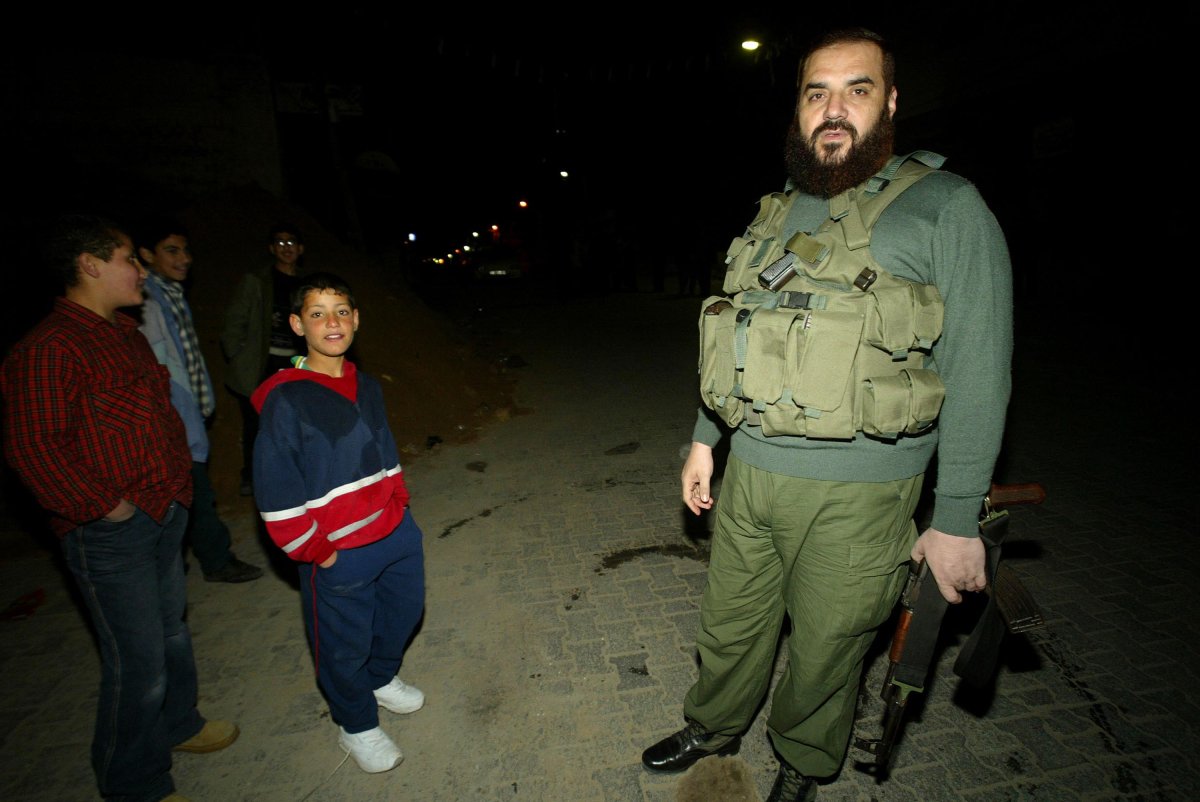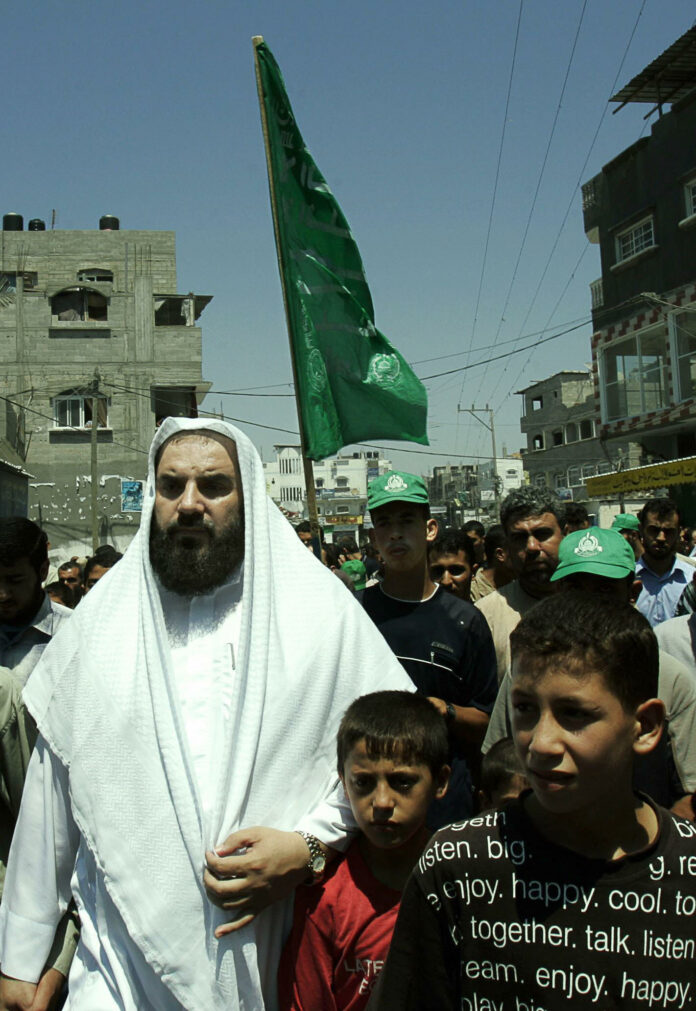In November 2006, months after Hamas won parliamentary elections and after the group began entrenching its rule in Gaza, Nizar Rayan, a political leaders and liaison with Hamas’ armed wing, introduced a novel strategy to protect the houses of Hamas militants from IDF bombardment. Rayan, a fiery religious clerk within Hamas and a rising militant star, marshaled hundreds of civilians into a house that had received IDF warnings of an impending strike. Instead of fleeing, Rayan called on people to swarm the house and cover its rooftop with as many civilians as possible to force the Israeli military into a choice: Either commit a massacre, or call off the airstrike.
Israel called off the strike, and the incident received widespread international attention. Though the tactic drew condemnation from Human Rights Watch, which criticized calling civilians to the scene of a planned attack as risky and dangerous, Hamas leaders like Ismail Haniyeh praised the tactic as a marvelous feat of perseverance and nonviolent resistance.
Nizar Rayan proclaimed victory and vowed to use the self-described “human shields on rooftops” strategy to prevent future destruction of Hamas members’ houses and infrastructure. It would go on to be used dozens of times in the years leading up to the first major war between Israel and Hamas in 2008-2009.
MARCO LONGARI/AFP via Getty Images
Ironically, Rayan was killed in January 2009 at his family home along with all four of his wives and 12 of his children. Tragically for his children, Rayan was killed by the failure of his own human shields strategy, which did not protect him after he received a warning call from the Shin Bet that an attack on his house was imminent.
Nevertheless, the human shields strategy progressively grew as part of Hamas’s defensive posture in which it counted on its activities and assets within urban and crowded areas being immune from Israeli attacks that could result in widespread and unspeakable civilian casualties.
Partly due to the urban nature of Gaza, and partly by embedding its activities and assets among the civilian population, Hamas’s infrastructure grew increasingly intertwined with civilian infrastructure and populations. This despite numerous occasions in which people in Gaza would object to rocket launches firing near their homes, tunnels being dug underneath their properties, or hidden stockpiles being placed close to their businesses and houses. Hamas mostly used the stick approach to silence opposition to its militant encroachment upon civilian areas and neighborhoods.
Hamas believed that as a people’s militia and a righteous religious resistance group against the Israeli occupation, it had a moral right to operate amongst the population from which it derived its strength, legitimacy, and fighters.
Unfortunately, and horrendously, this strategy ultimately failed and brought unspeakable death and suffering upon the people of Gaza. Over time, and in past and current wars, the IDF became less risk-averse and more willing to tolerate civilian casualties in pursuit of high-value targets and military infrastructure. Israeli airstrikes and bombardment would regularly hit and destroy entire neighborhoods, commercial areas, schools, mosques and hospitals.
While it is true that Hamas would use these places for its activities, it unfortunately became exceptionally easy for the IDF to justify civilian casualties, wrongful deaths, and questionable actions by blaming Hamas for embedding itself amongst civilian populations and infrastructure.

Abid Katib/Getty Images
Hamas’s immoral decision to normalize the self-described “human shields” strategy has not only been incredibly destructive for Gaza’s civilian population. It has also proved ineffective as the IDF loosened its rules of engagement to allow for more risky and deadly strikes on Hamas targets.
Multiple things are true simultaneously: The Israeli military kills civilians in its pursuit of militants and subsequently attempts to absolve itself of moral and operational responsibility by blaming Hamas’s use of Gazans as human shields. And Hamas absolutely disregards the safety and well-being of Gazans by deliberately and nefariously placing its infrastructure and armaments among civilians and crowded neighborhoods and cities throughout the Gaza Strip. The group gives itself the right to be anywhere it deems necessary in Gaza because the interests of the “resistance” far outweigh any harm done to innocent civilians in pursuit of the supposed “greater good” and the “liberation of Palestine.”
What began as Nizar Rayan’s human shields strategy to protect militants’ houses from Israeli bombing has sadly and ironically ended up with Hamas turning innocent and uninvolved Gaza civilians into its own “collateral damage.”
Ahmed Fouad Alkhatib is a U.S. citizen from Gaza and a Middle East political analyst who writes extensively on Gaza’s political and strategic affairs.
The views expressed in this article are the writer’s own.
Uncommon Knowledge
Newsweek is committed to challenging conventional wisdom and finding connections in the search for common ground.
Newsweek is committed to challenging conventional wisdom and finding connections in the search for common ground.


